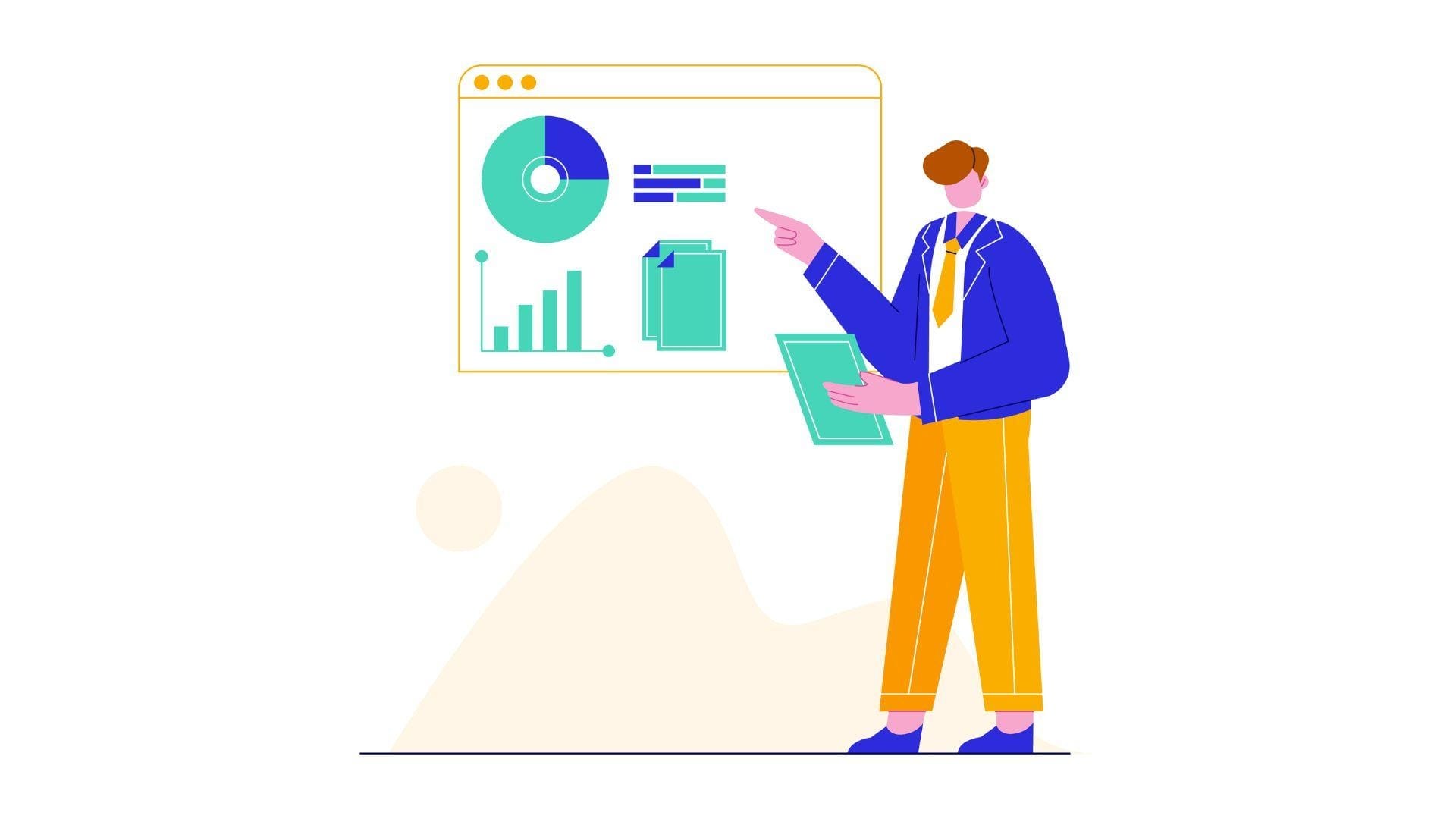How to Use AI for Sales Prospecting to Maximize Lead Conversion
Learn how to use AI for sales prospecting to automate tasks, prioritize leads, and boost conversion rates, improving your sales strategy and efficiency.

Sales prospecting is evolving at an unprecedented pace, and AI is at the heart of this transformation. In fact, research shows that 81% of high-performing sales teams already use AI in their prospecting efforts, driving increased productivity and faster conversion rates. So, how can your sales team leverage these advancements? The answer lies in understanding how to use AI for sales prospecting effectively.
In this guide, we’ll explore how AI can transform your approach to prospecting, from automating lead generation to prioritizing high-value opportunities, ensuring that your sales team works smarter and more efficiently.
As we explore how to use AI for sales prospecting, it's important to first understand what AI in this context really means and how it’s reshaping the sales landscape.
What is AI for Sales Prospecting?
AI for sales prospecting refers to the use of artificial intelligence technologies to enhance and automate key sales tasks, such as lead generation, data analysis, and personalized outreach. By using algorithms and machine learning, AI can analyze vast amounts of data, identify high-potential leads, and even predict which leads are most likely to convert. This allows sales teams to focus on building relationships and closing deals, while AI handles the repetitive and data-heavy tasks.
Also Read: 10 Best Sales Prospecting Tools to Try In 2025
How to Use AI for Sales Prospecting
By integrating AI into your sales process, you can streamline lead generation, automate outreach, and improve the accuracy of your lead scoring, all while enhancing the overall sales experience.
While implementing AI isn’t just about automation, the tools provided are designed to complement human efforts—making your team more efficient, informed, and ultimately, more successful. Let's explore how this plays out in real-world applications.
Automating Lead Generation with AI
According to Harvard Business Review, companies using AI in sales prospecting have saved 40% time in sales productivity. AI's ability to quickly process and prioritize data means that sales teams can reach out to leads who are most likely to convert.
AI can transform the way sales teams generate leads by automating the entire process. Traditionally, finding and qualifying leads is a time-consuming task. With AI, this process becomes faster and more efficient.
How AI Works in Lead Generation
AI analyzes vast amounts of data to identify and prioritize high-quality leads. By examining factors such as company size, industry, and engagement signals, AI predicts which leads are most likely to convert.
Impact of Automation on Sales Teams
AI automates the repetitive aspects of lead generation, allowing sales teams to focus on more strategic tasks, such as engaging with qualified leads. This increases productivity and ensures that efforts are focused on the right prospects.
Data Cleaning and Enrichment Using AI
According to a study, 95% of businesses say that data quality impacts their customer acquisition efforts. By using AI to clean and enrich your data, your sales team will be more efficient and make better decisions, leading to higher conversion rates and better overall sales performance.
Clean data ensures that your sales team is targeting the right prospects with the right message. However, data often becomes outdated or incomplete, leading to missed opportunities. This is where AI can play a vital role.
How AI Improves Data Quality
AI can automate the process of cleaning data by identifying and removing duplicates, correcting inaccuracies, and filling in missing information. It can also analyze vast datasets, detect errors, and improve the consistency of the information. This ensures that your sales team is always working with reliable, high-quality data.
AI-Powered Data Enrichment
Beyond cleaning, AI can also enrich your data by adding valuable information, such as job titles, company revenue, or recent news about a prospect's business. AI tools can integrate with various data sources and automatically update your CRM with the most relevant information. This helps in creating a more complete and detailed prospect profile.
Benefits of Clean and Enriched Data
Clean and enriched data enables more efficient sales efforts by improving targeting, lead scoring, and messaging. It reduces manual effort and errors, while increasing engagement by providing accurate insights for personalized outreach.
- Better-Targeted Outreach: Clean and enriched data ensures that your outreach efforts are directed toward the most relevant prospects.
- Improved Lead Scoring: With accurate data, lead scoring becomes more precise, allowing sales teams to focus on high-potential leads.
- Tailored Messaging: Sales teams can craft personalized messages based on accurate insights, leading to higher engagement.
- Reduced Manual Effort: AI-driven data management automates the process of updating and maintaining your CRM, saving time and reducing errors.
3. Lead Scoring and Prioritization with AI
Traditionally, sales teams use manual processes to score leads, which can be time-consuming and imprecise. AI enhances this process by automating and refining lead scoring with greater accuracy and efficiency.Companies using AI for lead scoring saw a 30% increase in sales opportunities. AI enables sales teams to focus their time and resources on leads that matter most, improving productivity and driving better results.
How AI Improves Lead Scoring
AI analyzes historical data and interactions to predict which leads are most likely to close. By considering factors such as past engagement, browsing behavior, and social media activity, AI assigns scores that reflect a lead’s readiness to purchase. This allows sales teams to prioritize leads who are further down the sales funnel, ensuring that their efforts are focused on high-value prospects.
Benefits of AI in Lead Prioritization
AI-powered lead scoring brings several advantages:
- Efficiency: Automates the scoring process, saving time and reducing human error.
- Accuracy: Provides data-driven insights to prioritize leads that are most likely to convert.
- Focused Outreach: Helps sales teams direct their efforts toward leads with the highest potential, improving conversion rates and sales outcomes.
How AI Predicts Lead Value
AI uses predictive analytics to assess the quality of leads by analyzing patterns in their behavior. For example, if a lead engages with specific content or visits your website multiple times, AI will recognize these signals as indicators of higher interest, leading to a higher score. Additionally, AI can factor in external signals, like market trends or recent company developments, to predict the likelihood of conversion.
4. Lead Scoring and Prioritization with AI
Studies show that businesses using AI for lead scoring experience a 30% increase in sales opportunities, thanks to more targeted efforts. With AI handling the prioritization of leads, sales teams can concentrate on prospects who are more likely to convert, improving overall sales performance.
How AI Enhances Lead Scoring
AI takes lead scoring to the next level by analyzing a vast amount of data to determine a lead’s likelihood to convert. Instead of relying solely on basic demographic information, AI examines behavioral patterns, such as website visits, email engagement, and social media activity. This allows AI to predict which leads are most likely to make a purchase so sales teams can focus their efforts where they matter most.
The Benefits of AI-Powered Lead Prioritization
AI-powered lead prioritization streamlines the sales process by speeding up lead scoring and enhancing accuracy. It allows sales teams to focus on high-priority leads, optimizing resource allocation and improving conversion rates.
AI brings several key advantages when it comes to lead prioritization:
- Speed: AI automates the lead scoring process, eliminating the time spent on manual assessments.
- Accuracy: By analyzing vast data sets, AI offers highly accurate predictions about which leads are most likely to convert.
- Effective Resource Allocation: Sales teams can focus on high-priority leads, improving the chances of closing deals faster and more effectively.
AI assesses both explicit and implicit signals to predict lead value, enhancing lead scoring accuracy. However, the path to successful AI adoption can be challenging. Let's dive into some common obstacles teams encounter and how to overcome them, ensuring a smooth transition to an AI-driven prospecting strategy.
How AI Predicts Lead Value
AI evaluates both explicit signals, like past interactions with your brand, and implicit signals, like engagement patterns, to determine the quality of each lead. For instance, a lead who has visited your pricing page multiple times or downloaded a case study may be ranked higher than others, indicating higher intent to purchase. AI also integrates external data, such as market trends or industry shifts, to enhance lead scoring accuracy.
While the potential benefits of using AI for sales prospecting is clear, the road to successful adoption isn't always smooth. Let’s now explore some of the common obstacles teams face when integrating AI and how to overcome them, ensuring a seamless transition to a more efficient, AI-driven prospecting strategy.
Also Read: Top 10 AI Sales Agent to Boost Your Sales in 2025
Overcoming AI Integration Challenges in Sales Prospecting
Implementing AI in sales comes with several hurdles, but these can be overcome with the right approach. The common challenges include:
- Data Quality Issues: AI relies on accurate and clean data. If your data is outdated or incomplete, AI insights will be unreliable.
- Team Resistance: Sales teams may feel that AI tools could replace their jobs or complicate their processes.
- System Integration: AI tools need to work seamlessly with your existing CRM and sales systems, which can sometimes be a complex task.
Addressing Data Quality Issues
AI-driven sales tools require high-quality data to function effectively. Poor data leads to poor outcomes. To resolve this:
- Regularly clean and update your data.
- Implement automated data entry to reduce human error.
Overcoming Resistance from Sales Teams
Salespeople may worry that AI will take over their tasks. To overcome this:
- Highlight that AI enhances their work by automating repetitive tasks.
- Offer training to help them understand how AI tools will improve efficiency and lead generation.
- Share success stories to show how AI frees up time for more strategic tasks.
Smooth AI Integration with Existing Systems
AI tools need to integrate well with your CRM and other sales systems to ensure smooth operation. To facilitate integration:
- Choose AI tools that are compatible with your existing infrastructure.
- Work with your IT team to ensure seamless data flow between platforms.
Best Practices for AI Integration
- Data Cleaning: Prioritize keeping your data clean and consistent to ensure AI tools can make accurate predictions.
- Training Sales Teams: Ensure your team is comfortable with the AI tools, emphasizing how AI supports rather than replaces their work.
- Select Compatible Tools: Choose AI tools that easily integrate with your CRM to avoid friction during implementation.
Also read: How You Can Incorporate AI In Sales Pipeline
Looking Forward To the Future of AI in Sales Prospecting
The integration of Artificial Intelligence (AI) into sales prospecting is not just a passing trend; it's a transformative shift backed by compelling data. Recent studies indicate that AI adoption in sales functions has surged, with 81% of sales teams either experimenting with or fully implementing AI solutions. This widespread adoption is driven by tangible benefits, including enhanced efficiency, improved lead quality, and increased revenue growth.
This is where Alisha SDR comes into play. Alisha is an AI-powered Sales Development Representative specifically designed to revolutionize the sales prospecting process. By leveraging advanced AI algorithms, Alisha automates lead research, personalized outreach, and prioritizes leads based on predictive analytics. Let’s understand how Alisha SDR can change the sales game and how you use AI for sales prospecting
Introducing Alisha SDR: The Future of Sales Prospecting
As AI becomes more embedded in sales prospecting, Alisha SDR stands out as a cutting-edge solution that embodies the future of intelligent sales automation.
Alisha SDR is an AI-powered Sales Development Representative designed to:
- Automate lead research: Alisha gathers and qualifies leads based on predetermined criteria, ensuring your sales team focuses on high-potential prospects.
- Personalize outreach: Alisha tailors messaging to each lead based on behavior, ensuring every interaction feels relevant and timely.
- Prioritize leads: Using predictive analytics, Alisha helps your team prioritize leads that are most likely to convert, saving time and increasing efficiency.
By integrating Alisha SDR into your sales workflow, your team can increase productivity, reduce manual work, and enhance the overall sales process, making it more data-driven and efficient.
As AI continues to evolve, tools like Alisha SDR will become indispensable for sales teams looking to stay competitive and scale effectively.
Conclusion
Incorporating AI into your sales prospecting process is more than just a technological upgrade; by understanding how to use AI for sales prospecting, your team can automate lead research, personalize outreach, and prioritize high-value prospects, ultimately increasing efficiency and conversion rates.
Ready to transform your sales strategy? Alisha SDR is here to help automate lead research, personalize outreach, and prioritize leads so your team can focus on closing deals. Book your demo call with Alisha SDR today and take your prospecting efforts to the next level.


